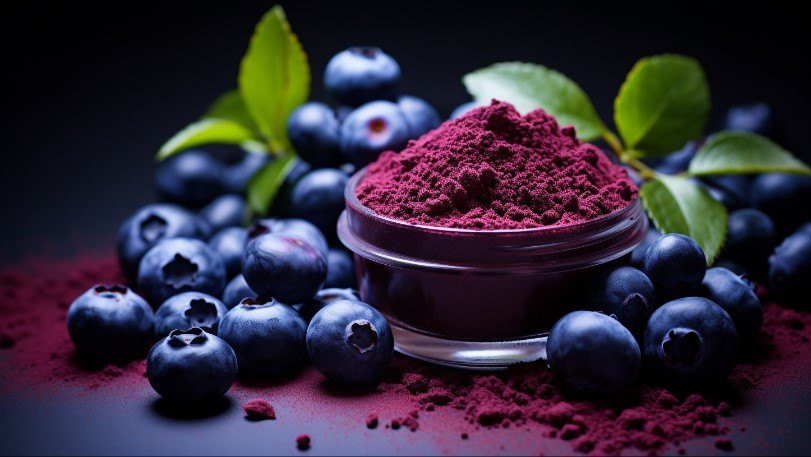Europäischer Preiselbeerextrakt in Nahrungsergänzungsmittel für die Augenpflege Hermes

It is said that “the eyes are the window to the soul”, and now we can only see each other’s thick glasses, or because of visual fatigue gradually dull eyes. In the Internet era, both adults and children are inseparable from the use of electronic devices. Due to excessive use of the eyes, eyes dry and sour swelling, blurred vision and even decreased vision and other vision problems, frequent. In addition, the aging of the human body, unhygienic use of the eyes, diabetes, lack of nutrition and other aspects will also cause the decline of vision. Various phenomena force us to pay more attention to the problem of eyesight
The demand for eye care is growing, and the prospect of eye care products is good
According to a survey by the National Health Commission, the overall myopia rate of children and adolescents in China will be 52.7 percent in 2020. Among them, 14.3% were 6-year-olds, 35.6% were elementary students, 71.1% were middle school students, and 80.5% were high school students. Nearsighted people tend to be young. Among the elderly, age-related macular degeneration (AMD), which causes vision loss, affects more than 30 million people in China and is increasing by 300,000 people every year. According to the 2022 “Chinese Professionals’ Eye Health Insight Report”, 86.3% of professionals have dry eyes, and 36.6% of the population has visual fatigue. From teenagers to the elderly, the phenomenon of visual fatigue and reduced vision is widespread and needs to be solved.
Anthocyane vs. Lutein
At present, the main components of eye care products on the market are lutein, lutein ester, zeaxanthin, vitamin A and beta-carotene. Among them, lutein is the most well-known and commonly used eye care ingredients, it is the main pigment of the macular area of the human retina, but lutein is a fat-soluble vitamin, the human body can not be synthesized, need additional supplements.
In recent years, with the hot eye care market, another eye care ingredient – European bilberry anthocyanins have attracted more and more attention. European bilberry, English name Billberry (scientific name Vaccinium myrtillus L.), the anthocyanins contained in it can improve the antioxidant capacity of the retina, strengthen the elasticity of the eye microvessels, promote blood circulation, maintain normal eye pressure, ensure the supply of nutrients in the eye, and have a supporting role in visual fatigue and night vision. Anthocyanins are water-soluble natural pigments, which can be directly absorbed by the human body. Studies have shown that anthocyanins can be detected in the blood after 20 minutes of taking them, and the absorption rate is very high.
Die European bilberry ≠ the blueberry
When it comes to anthocyanins, your first thought might be blueberries. Many people will confuse the European cranberry and blueberry, but in fact, the blueberry and the European cranberry are the same genus of different species, although there are similarities, but there are some differences in morphology and anthocyanin composition.
Blueberries are cultivated varieties that grow in clusters and have pale yellow flesh. The European cranberry is a wild species, the best production concentrated in northern Europe in the Arctic Circle, more scarce; It can neither be grown by hand nor picked by machine, and it grows single fruit with purple flesh. Because the fruit is soft and fragile, it needs more care during transportation and production.
The composition and content of anthocyanins in European bilberry and blueberry are also different. Blueberries have more anthocyanins than blueberries, and the anthocyanin content of European blueberries is up to four times that of blueberries.
Blueberries are cultivated varieties that grow in clusters and have pale yellow flesh. The European cranberry is a wild species, the best production concentrated in northern Europe in the Arctic Circle, more scarce; It can neither be grown by hand nor picked by machine, and it grows single fruit with purple flesh. Because the fruit is soft and fragile, it needs more care during transportation and production.
The composition and content of anthocyanins in European bilberry and blueberry are also different. Blueberries have more anthocyanins than blueberries, and the anthocyanin content of European blueberries is up to four times that of blueberries.
Referenz
[1]C.Gizzi,G.Belcaro,G.Gizzi,et al. Bilberry extracts are not created equal: The role of non anthocyanin fraction. Discovering the “dark side of the force” in a preliminary study. European Review for Medical and Pharmacological Sciences, 2016, 20: 2418-242.
[2]S. Kajimoto, K. Sasaki, T. Takahashit. Therapeutic effect of blueberry extract in school children with pseudomyopia at theage of cramming for exam to restore their visi on. J.New Rem.& Clin, 2000, 49, 12000.
[3]A. Riva, S. Togni, F. Franceschi, et al. The effect of a natural, standardized bilberry extract(Mirtoselect®) in dry eye: A randomized,double blinded,placebo -controlled trial. European Review for Medical and Pharmacological Sciences, 2017, 21: 2518-2525.
[4]O. Kajimoto. Clinical evaluation of oral Vaccinium myrtillus anthocyanosides (VMA) in mental fatigue and asthenopia (social and other sciences).Scientific Report Collection, 1998, 19:143-150.
() ()